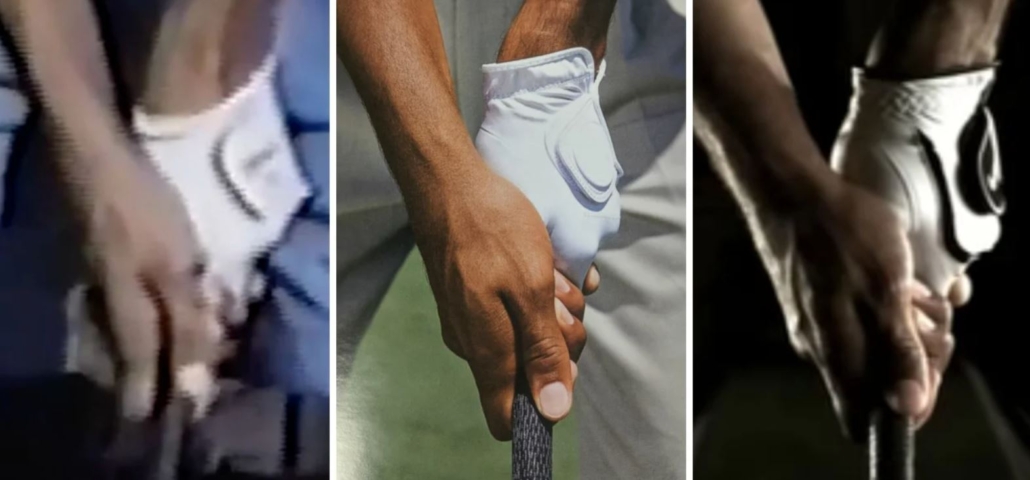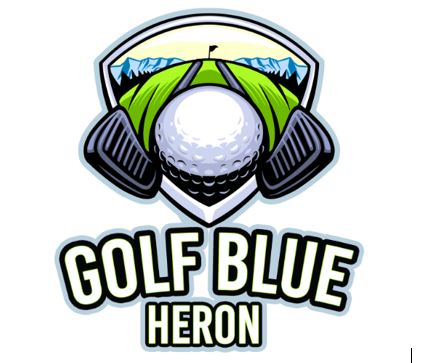Pros And Cons Of A Strong Golf Grip – Who Should Use It

There are three types of grip setups commonly employed by professional and amateur golfers. Strong, neutral, and weak.
The way you grip the club will promote varying clubhead positions at impact, which induces a fade, draw, or a straight shot.
If you need insight into different grips, you can read our article, Strong vs Weak Golf Grips. However, for the purposes of this article, we are out to identify the pros and cons of a strong golf grip to determine who should use it.
My Experience With Golf Grip Strength
In my 27 years of playing golf, I have used a neutral grip for all but three months.
I had a coach that got me to weaken it, but that was disastrous and resulted in a consistent hook.
By strengthening my grip, I can get more power at impact and increased distance.
How Important Is The Strength Of Your Golf Grip?

While a strong grip is likely to deliver more power at impact and more distance, it may be uncomfortable for some players to apply. Ultimately, if you are not comfortable with a grip don’t use it.
According to Golf.com’s Nathalie Filler, a stronger golf grip prompts an in-to-out swing leading to a closed clubface at impact and a draw shape. However, if your tempo is off, it can lead to a duck hook.
What Is A Strong Golf Grip?
Tom Watson says that a strong grip will reveal too many knuckles at setup and causes your clubface to close at impact.
Additionally, Filler explains that a strong grip is made when the thumb of your leading hand points to the right of the clubface for right-handers and left for lefties.
The great Jack Nicklaus suggests that players with a naturally weak grip should use an interlocking setup to gain a stronger grip on the club.
Pros Of A Strong Golf Grip

Reduces Sliced Shots
As mentioned earlier, a stronger grip promotes an in-to-out swing which leads to your clubface closing at impact.
This action prompts a draw shape and is helpful to players who swing over the top and are serial slicers of the ball.
Those of you with a stronger grip will find it easier to induce a draw than players with a weaker grip, who tend to open their face and fade the ball more.
The downside to this setup is that if your swing rhythm is off, it can cause you to hook your shots.
Optimized Power
According to Golf Week’s Mike Southern, a stronger grip makes the club feel lighter and easier to handle on your backswing.
That helps you to optimize your clubhead speed and transfer it to your ball speed. Resulting in a powerful launch and maximum distance.
From my own experience, a stronger grip helped me achieve a consistently powerful launch, maximizing distance. When I used a weaker grip, I lost considerable distance and never felt in control of the club at impact.
Comfortable
As an average golfer, you will likely find that a stronger grip is more comfortable compared to weaker variants.
It is natural for us to find comfort in gripping an item tightly, to ensure we have control over it.
Late golf coach Harvey Penick believed that all average golfers should use a strong grip.
His reasoning was that it optimized their swing mechanics and ball-striking abilities.
Promotes A Draw
I have explained that a strong grip promotes an in-to-out swing which prompts the clubface to close at impact and leads to a drawing shot.
The grip is ideal for superior golfers looking to consistently shape their shots from right to left as a right-hander and the opposite for lefties. Keep in mind that when your mechanics are off, it can result in you hooking your shot.
Lower Trajectory
A closed clubface at impact will also reduce the lie angle of the face, resulting in lower ball flight.
Although this is ideal if you are looking for a more controlled ball flight. It can be challenging for slower swinging golfers to generate enough ball speed and spin to get the ball airborne.
The lower trajectory will benefit golfers who may currently gain too much height on their shots.
Disadvantages Of A Strong Grip

Clubface Rotation
The challenge that arises from a closed clubface at impact is clubface rotation.
If you get the clubhead into the correct position, you can prompt a beautiful draw. However, if your rhythm is off, you can rotate the clubface too much and end up duck hooking your shot.
Hooked Shots
The result of excessive clubface rotation is a hooked shot.
The in-to-out swing generates right to left spin, for right-handers and any heel or toe mishit can send your ball well off course.
Trajectory
While the lower trajectory that emanates from a closed clubface may be welcomed by superior golfers, it increases the difficulty of golf for the average golfer.
A closed clubface will reduce the loft and the lie angle of the face, meaning you will need to generate extra ball speed to send your strike airborne. This could be challenging for those of you with slower swing speeds.
Who Should Use A Strong Grip?
Golfweek’s Mike Southern explains that Harvey Penick suggested that all average golfers should use a strong grip.
I will be more specific and say that it is best suited to players looking to prompt a consistent draw. As well as for those of you struggling with a slice or fade.
Do Pros Use A Strong Grip?

After reading a blog post on Golf WRX by John Wunder, I was surprised to see the names of Pros who use a strong grip.
The list includes Dustin Johnson, Zach Johnson, Fred Couples, Bubba Watson, and Bernhard Langer. A great combination of past and current stars.
Should Seniors Use A Strong Grip?
If you can play with a strengthened grip, I recommend doing so, as it will help you achieve consistent ball speed and promote a draw bias shape.
Admittedly some seniors may struggle to employ a stronger grip. In this case, I recommend that you tick to the Golden Bear’s advice and use an interlocking grip.
The interlocking grip secures the club in your hand, naturally strengthening your grip and control.
Should Beginners Use A Strong Grip?
Beginners may naturally adopt a stronger grip to enhance their control over the club.
For most newbies, it feels the most natural. I am a fan of the average golfer using a strong grip, whether you are a beginner, a mid handicapper, or a superior player.
Should You Use The Same Grip Strength For Ever Club?
The short answer is no. The reason for not using the same grip strength for every club comes down to the type of shot you are trying to play.
If you want to hit a fade, you need to weaken your grip, no matter what club you have in hand. Similarly, if you want to work a draw, you will need to employ a stronger grip.
When it comes to chipping and wedge shots. I may weaken my grip to reduce the power of the launch and land it quick and soft.
Takeaways From A Strong Grip

A closed clubface at impact emanating from an in-to-out swing and a strengthened grip promotes a draw bias shape, ideal for reducing slices.
Furthermore, the increased hold on the club makes it feel lighter, helping golfers swing freely and generate optimal clubhead speed.
Finally, the great coach Harvey Penick believed a strengthened grip was the best option for the average golfer to maximize distance and consistency.
Strong Grip Vs Weak Grip
Strong Grip
As we have learned during this post, a strong grip is ideal for inducing a draw and reducing the risks of slicing your shot.
Furthermore, this grip is comfortable and makes you feel in control of the club.
A strengthened grip enhances the risk of a hooked shot or limited time in the air due to the adjusted clubface loft.
Weak Grip
Players who use a weaker grip, often feel less control of their golf club and may swing out-to-in to compensate for their discomfort.
This action prompts the clubface to open at impact, leading to a fade.
However, if your swing mechanics are out of place, you may fall victim to repeated slices.
Conclusion On The Pros And Cons Of A Strong Golf Grip

Diving into the pros and cons of a strong golf grip has highlighted two key factors. Firstly, using this grip helps you reduce the risk of slicing your shot.
And, secondly, it leads to a draw shape, ideal for superior players looking to hit work their ball in that direction.
So, who should use a strong grip? I recommend low, mid, and high handicappers employ a strong grip. You will be grateful for the consistent distance. Unless you are already a serial hooker of the ball, in which case you need to weaken your grip.
Aidan Lehane here, I’m a Mid-low handicap golfer who has made tremendous progress in breaking 90 in just over 1 year of playing golf seriously.
I get out to the course or range as often as possible and review all the equipment I’ve come across on this blog.
